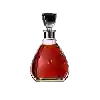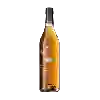
Cave TambourAmbroisie
This wine generally goes well with beef and mature and hard cheese.
The Ambroisie of the Cave Tambour is in the top 60 of wines of Banyuls.
Food and wine pairings with Ambroisie
Pairings that work perfectly with Ambroisie
Original food and wine pairings with Ambroisie
The Ambroisie of Cave Tambour matches generally quite well with dishes of beef or mature and hard cheese such as recipes of dombrés and pig tails or pizza with beef and comté cheese.
Details and technical informations about Cave Tambour's Ambroisie.
Discover the grape variety: Sousão
Most certainly Portuguese. It can also be found in Spain and South Africa. It would be related to the loureiro and the caino blanco.
Informations about the Cave Tambour
The Cave Tambour is one of of the world's great estates. It offers 16 wines for sale in the of Banyuls to come and discover on site or to buy online.
The wine region of Banyuls
Banyuls wines come from the South-eastern Part of Roussillon, in the south of France, in the lower Pyrenees, a few kilometres from the Spanish border. These naturally Sweet wines are consumed both as an aperitif and as a dessert. They come in a wide range of hues, from GoldenGreen (Banyuls Blanc) to Amber (Banyuls Ambré) to the intense garnet of the standard Banyuls Rouge. Unusually among the natural sweet wines of France, all Banyuls wines are made primarily from Grenache grapes of various colors.
The wine region of Languedoc-Roussillon
Languedoc (formerly Coteaux du Languedoc) is a key appellation used in the Languedoc-Roussillon wine region of southern France. It covers Dry table wines of all three colors (red, white and rosé) from the entire region, but leaves Sweet and Sparkling wines to other more specialized appellations. About 75% of all Languedoc wines are red, with the remaining 25% split roughly down the middle between whites and rosés. The appellation covers most of the Languedoc region and almost a third of all the vineyards in France.
The word of the wine: Racé
Character of a great wine remarkable for its elegance and finesse.














